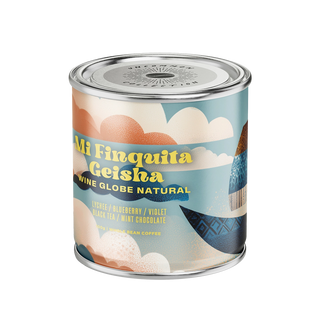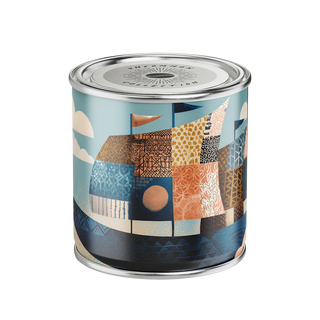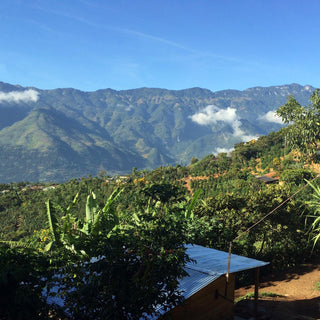- Filter
Mi Finquita Geisha Wine Globe Natural
LYCHEE | BLUEBERRY | VIOLET | BLACK TEA | MINT CHOCOLATE
*Roast Date: October 9th*
Seriously?! A wineglobe? Yes, Ratibor continues to innovate. This year when I visited Panama, I saw these beautiful round wineglobes full of coffee cherries and I was immediately intrigued. Later that day, I cupped many tables of Geishas and found that the coffees were very expressive and super clean. I asked Ratibor to please explain what the wineglobe is all about. Read on below to find out what he had to say.
Adding product to your cart
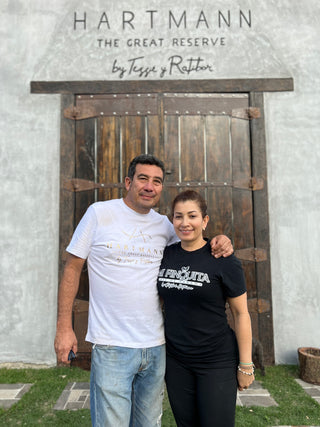
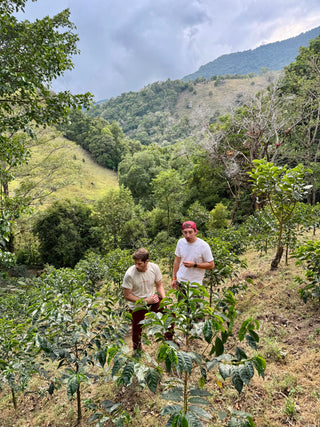
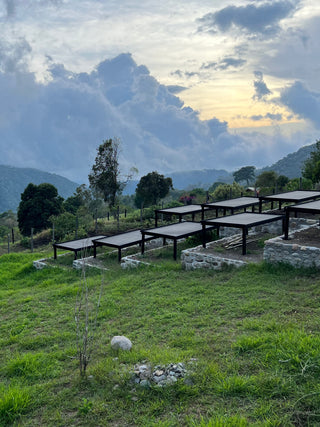
BRINGING BORDEAUX TO THE PANAMA HIGHLANDS
Can Ratibor Hartmann do no wrong?! His coffees continue to push to the top of my charts! I go to Panama every year and I spend a week with Ratibor Hartmann. During this week, we taste a lot of Geishas together. I mean a lot – washed, natural, anaerobic, cold fermentations, carbonic macerations, pretty much the whole gamut. This process is an anaerobic natural process but with a twist - the fermentation happened inside a glass wineglobe that Ratibor brought from Bordeaux - ya, Bordeaux, France! Home to some of the world’s most prestigious wines!
Before I dive into the processing method, let me tell you a bit about Ratibor and his farm. I don’t know what I can say about Ratibor that does him justice. He’s a fountain of coffee knowledge, he’s kind, humble and has a passion for coffee like none other. I met Ratibor in 2010 and we have been close friends ever since. Like his four siblings, Ratibor started from very humble beginnings. Their grandfather settled on the land where Finca Hartmann now stands in the 1920s as an immigrant from Czechoslovakia. Ratibor’s father, also named Ratibor, then expanded the farm up the hill into the mountains through the 1970’s. In the early 2000’s, Ratibor senior handed the farm down to the five children and they have been working together ever since. When I first started buying coffee from the Hartmann’s, their coffee was very good, but not considered the upper tier of Panama coffee. Their farms were all located at lower elevations, the varieties they grew were more “regular” and they were just starting to experiment with processing methods.
Since that time, Ratibor has become a very close friend of mine and we talk coffee weekly. Every time I see him, I learn about a major change or improvement to the farm. Some of these changes are at the agricultural level – varieties, farm management, new land, new plantings; while others are at the processing level – modified processing methods, new drying processes, and darkrooms.
This coffee is from one of these changes. In 2015, Ratibor and Tessie decided to launch their own project, separate from Finca Hartmann, so they purchased land in the region of Pozos. They called this farm “Mi Finquita”, which means My Little Farm. This region has been growing under the radar for the past few years, Ratibor describes it as the perfect place for coffee – clearly many agree with him. This region is the fastest growing coffee region in Panama and was first proven to be amazing by farms such as Ninety Plus Gesha Estates and Finca Deborah.
Ratibor and Tessie planted Caturra, Bourbon, SL-28, Geisha and Typica at Mi Finquita and the farm began producing in 2020 and the coffee is amazing. This coffee is a Geisha from Mi Finquita and to put it into perspective, their Geisha, which they have called “Golden Beetle” and “Afrodita” won third place in the 2021 Best of Panama competition, then 4th in 2022 and 2023. The coffee is clearly special!
Now, about the natural wineglobe process…
The coffee was anaerobically fermented in a 115L Bordeaux glass wineglobe for 36 hours. Then it was placed on raised beds for four days. After the initial drying the coffee was dried in the cushy confines of the darkroom. This method of dehydrating the coffee has become the gold standard in Panama and it’s my favorite way for drying naturals.
So why the wineglobe? Well, Ratibor likes a few things about it. First, it’s completely inert and impermeable - which creates a consistent fermentation environment from batch to batch. This allows the coffee to preserve the terroir expression rather than byproducts of inconsistent fermentations. The shape naturally reduces headspace, allowing for a true anaerobic environment.
Finally, and this gets a bit geeky, the wineglobe shape helps prevent reductive faults (i.e. sulfur like aromas) without oxygen input. The shape promotes the subtle movement of the coffee (through temperate changes) which helps promote microbial liveliness without spoilage (i.e. reductive byproducts). This is why many coffee producers often “burp” their tanks to remove some CO2 and slightly move the coffee. In the case of the wineglobe, this happens naturally. How cool!
So, back to my cupping with Ratibor. This coffee stood out right away. The fragrance was fruity and floral but less with jasmine and more with rich violets. The coffee is perfumed, intense in flavours, juicy, tropical and with a super lingering aftertaste. I tasted the coffee several times and both Ratibor and I were so moved by the coffee and inspired by how complex yet clean the coffee can be.
– Sebastian

